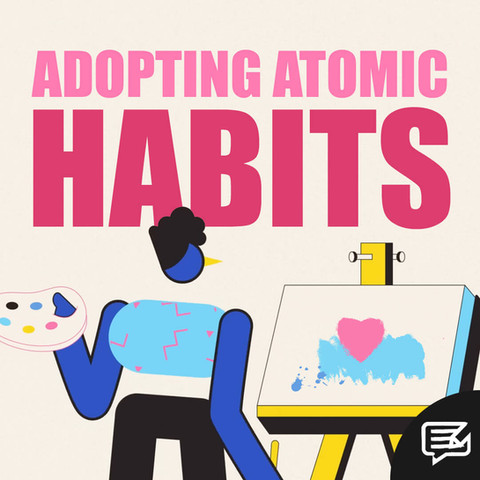
14.06.22
FIGHTING FIRE WITH TECH
What if we could harness satellites, drones and AI to detect and predict the behaviour of bush and forest fires before they ever break out? Thanks to the bright sparks working away at some of the world’s most exciting startups and research institutions, breakthroughs in space technology could soon be setting the world ablaze - in a good way.
As if we didn’t have enough on our plates, recent history has seen angry, ruthless blazes ripping through the natural environment like, well, wildfire. From Australia to the Amazon, California to Canada, the past 22 years alone have seen huge fires devastating 737,000km² of our planet, wreaking havoc on wildlife - and on life in general. According to the National Interagency Fire Center in the US, last year more than 80 large fires scorched more than 1.3m acres of land across the country, with new fires breaking out every week. And, of course, the 2019-2020 season in Australia saw bushfires break out on an unprecedented scale.



Some people watch the world burn, others are doing everything they can to stop it. In the 21st century, firefighting isn’t just about tackling the odd electrical fire or carrying people down ladders. Wildfires are a threat that affects us all - and fighting them requires some seriously disruptive solutions.
If wildfires move fast, tech must move even faster. Faced with the epic challenge of keeping wildfires under control and making the world a marginally safer place to live, boffins are, at this very moment, developing astonishing new programmes that can predict where fires might break out, how they will behave once the first spark has caught light, and what action emergency services can take to limit any possible damage.
In what feels like a bad attempt at dark humour, Silicon Valley itself was on the precipice of being engulfed in 2021. Mother Nature is challenging us, and she isn’t exactly being subtle.
Reporting on last year’s House Committee on Science, Space and Technology, NBC News quoted Zoe Lofgren, a Democratic representative for California:
“As the risk for catastrophic wildfire grows, so should our ability to forecast wildfires and to mitigate fire risk.”
Lofgren is campaigning for much-needed legislation to boost funding for research around the “understanding, prediction, and management of wildland fires”. Her bill aims to integrate scientific agencies into federal wildfire response strategies.
Until these most recent wildfires, Silicon Valley had been dragging its heels when it comes to developing solutions. Not any more. As reported by NBC, since 2020 more and more startups have been creeping into the sector, on the lookout for federal and state agencies to buddy up with. But what kind of tech are they developing?
“The U.S. Forest Service already uses predictive tools to monitor fire weather, fire danger and fuels, and provide intelligence for incident commanders, firefighters and support staff. But many of the tools available rely on satellite imaging that can take hours to transmit and analyze.”
Developed in 2014, the Pacific Northwest National Laboratory in Richland, Washington, partnered with the U.S. Department of Homeland Security to fund a system called Rapid Analytics for Disaster Response (RADR):
“RADR uses image-capturing technology from satellites, aircraft, drones, artificial intelligence and cloud computing to assess the impact of natural disasters, including wildfires. An expanded version of the tool, called RADR-Fire, can reveal wildfire boundaries multiple times a day and link impact and risk to structures, substations and other critical infrastructure in the landscape.”
In incidents where response teams on the ground can’t get an accurate read on the size or ferocity of fire, they usually call upon aircraft for aerial images which are then analysed to create a map of fire lines. What this process can achieve in hours, RADR can nail in just a few minutes.
Elsewhere, German company and Google Accelerator graduate OroraTech recently launched the first in its planned constellation of 100 shoebox-sized nanosatellites. Tiny but mighty, these little satellites are intended to monitor the entire planet and report “within an hour of ignition”, any fire larger than 10 meters, or about 33 feet. Speaking to NBC, OroraTech co-founder and CMO Björn Stoffers had this to say:
“Having an overview from the top, with the highest possible refresh rate, is the most important part of understanding and predicting fire behavior. We saw that every state has their own system and their own warning tools, and we saw huge discrepancies with those maps, especially with them being outdated. We’re already quite a bit faster.”
In just two short years, OroraTech has raised $7 million in investments, targeting the world’s most problematic wildfire sites. The programme reveals not just the location of a fire, but any surrounding spot fires, air particles, wind patterns and cloud cover, with new data segments such as lightning strikes and smoke plume direction being added in all the time.
While space travel seems to be the key to wildfire control, researchers are taking wildly different approaches. As reported by The Associated Press:
“San Francisco-based artificial intelligence company Chooch AI uses a system that analyzes satellite images every 10 minutes to identify where new wildfires started.” It goes on to report on the partnership between tech startup Salo Sciences and Planet, a satellite company founded by NASA scientists. The two have joined forces to create, “... a monitoring system called the California Forest Observatory, which uses AI and satellite images to create a detailed map of forested land in California to help predict and prevent wildfires.”
At the University of California, computer scientist Ilkay Altintas and her colleagues have similarly developed a model that can be used by response teams and researchers alike to track and project fire behaviour in real time. Using a combination of artificial intelligence and historic data, the tech predicts how new fires will burn. Significantly, it can also be used for planned or prescribed burns, designed to keep forests thinned and healthy - thus preventing huge fires in the future.
As in many areas of modern life, this tech is being designed to support, not replace, the experienced people already doing the work. In a battle between human beings and nature, nature is usually going to win. As climate change continues to up the ante with fires, the scale of the challenge is massive, and the stakes are high. All being well, the work being carried out by researchers will give us at least one powerful weapon in our global firefight.
It’s the stories like these: the outliers throwing all the resources they have at solving some of the biggest challenges we face as a collective, that remind me why I got excited about technology in the first place. These are some of the biggest infernos to rage through the world since disco hit the 1970s - and without the sheer brilliance of these experts, they are only going to intensify. Space-based technology is shaping the future of firefighting, and it’ll be fascinating to see what comes next.

























































